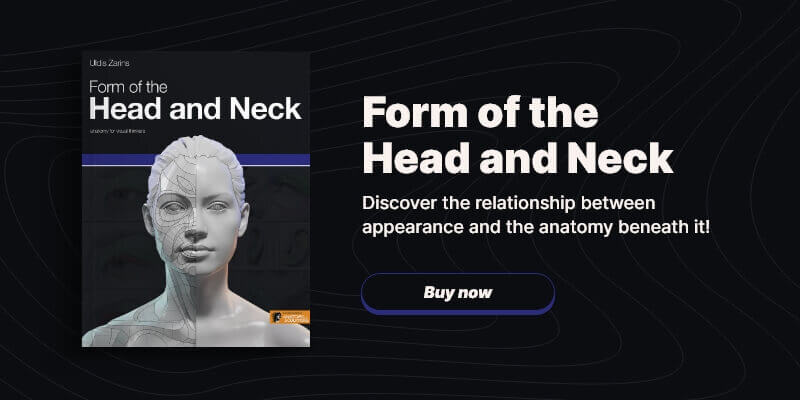Form of the Head and Neck – book content

You probably already know: the muscle underneath the skin has almost nothing to do with the form of one's face
At the very most, facial muscles are just one of the factors that define the final appearance of the face. Usually, they are responsible for just moving the masses of fat and skin on the surface instead of themselves making up the visible volumes.
Therefore it’s important to explain the relationship between the visible appearance and the anatomy beneath it, and the Form of the Head and Neck book does exactly that. Anatomy for Sculptors uses a unique approach to information design, making it visual and understandable, and the Form of the Head and Neck book is no exception.
Uniqueness of the Form of the Head and Neck book
Before I started making any of my books, including the Form of the Head and Neck book, I always tried to figure out: “What do I need as an artist?“
There aren’t many books about facial anatomy that explain the complete form of the face; a lot of them just look at the muscles beneath the form. Yet, the former is the knowledge essential for sculpting and 3D modeling, which is what the Form of the Head and Neck book is about.
It’s also important to point out that we can’t find the key to success in
just copying nature from either photos or live models. Instead, we should strive to understand the natural forms and how they are composed. This gives us as artists a lot of creative liberty.
The Form of the Head and Neck book breaks down the complex structures of the face into simple forms to help you better understand each of its elements – such as the mouth, eye, or ear. Each of them is reduced to block-outs and re-developed gradually into detailed realistic shapes.
This book brings visual and image information, including 3D models, photos, and color-coding, to the forefront. The Form of the Head and Neck book is made with the purpose of clearly explaining the forms of the face through simple visual language.
Understand and gain artistic freedom
Sometimes I hear statements such as: “this face looks a bit Asian.” But what makes a face look Asian? Is it the eyes, the curvature of the face, or the nose? What are those features, and how can we create them?
Another thing I hear art students saying: “this face looks older, or this girl’s face looks a bit masculine.” But again, the real question is: what are those things that make a face look more masculine or older? Maybe it’s the nasolabial fold? Perhaps it’s the jawline?
I explore all these things in the Form of the Head and Neck book – just take a look at this simple visual explanation of facial flatness comparing the face of an Asian woman and a Caucasian woman.
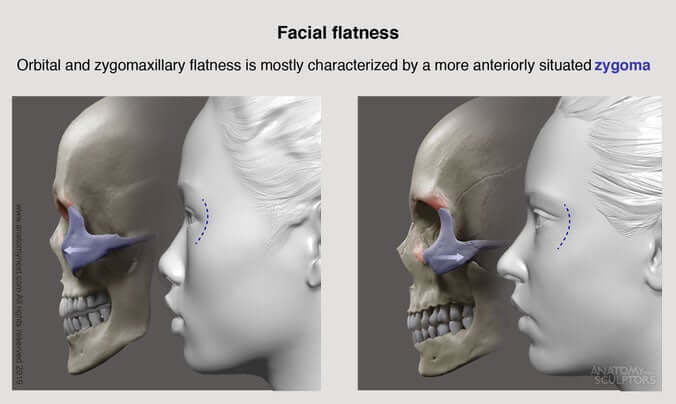
The head and neck have an ever-changing structure. There are many different variations!
For true artistic freedom, it’s not enough to know how to create a still face of a young Caucasian male. The sculpture of David by Michelangelo is an extraordinary piece of art, but we cannot use it as a reference point every single time.
Face modeling and face anatomy is full of challenges. Faces are rarely static; besides emotions, many other factors make them look different from one another – age, ethnicity, gender, body type, and a little bit of anatomy. We explore all of these categories in the Form of the Head and Neck book. Let’s take a look:
Gender – Male and Female facial anatomy and forms
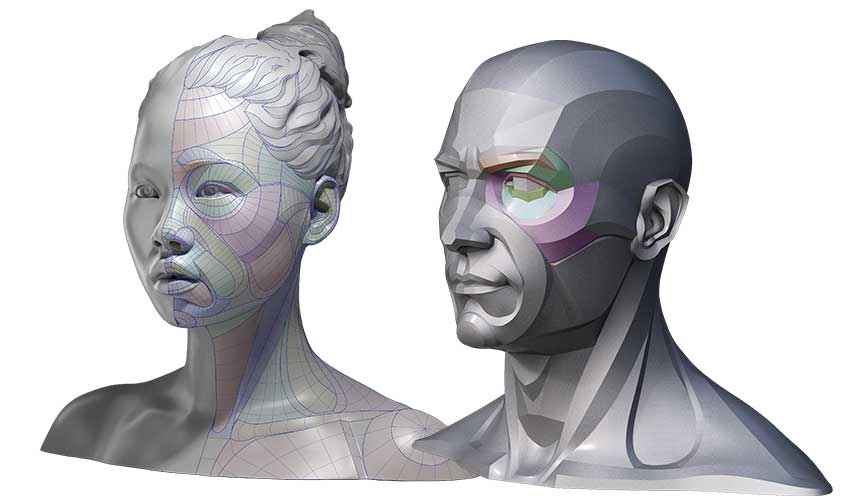
Age:
- Younger

- Older
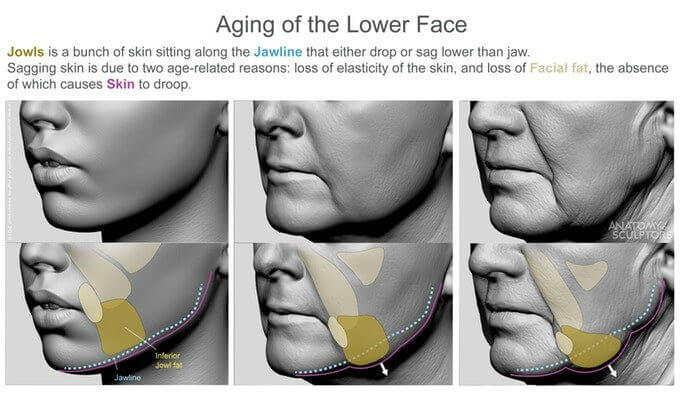
Ethnicity
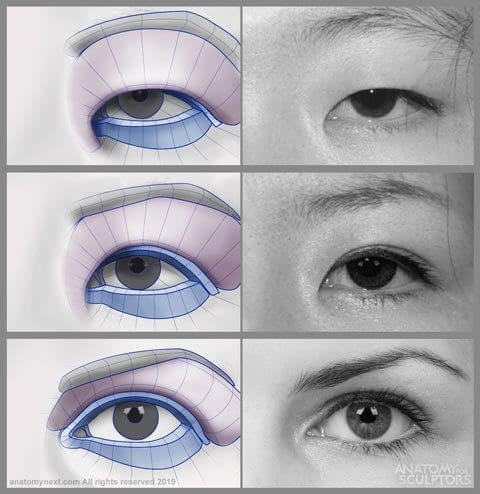
Body type
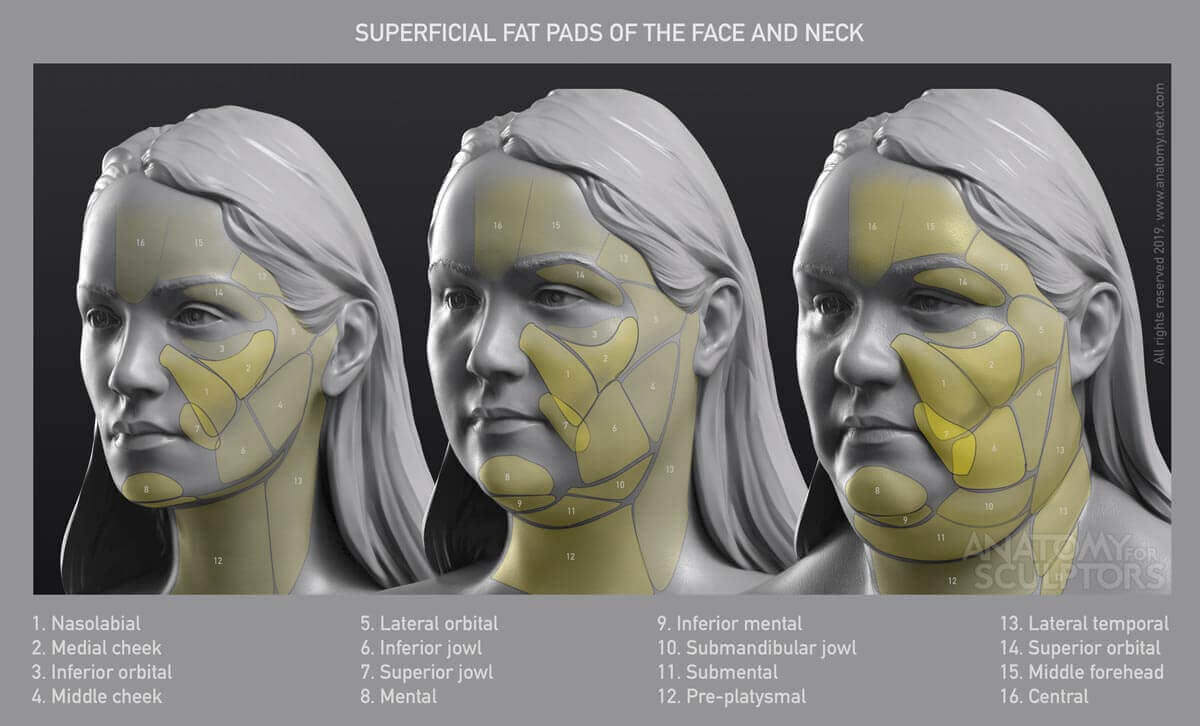
A bit of anatomy
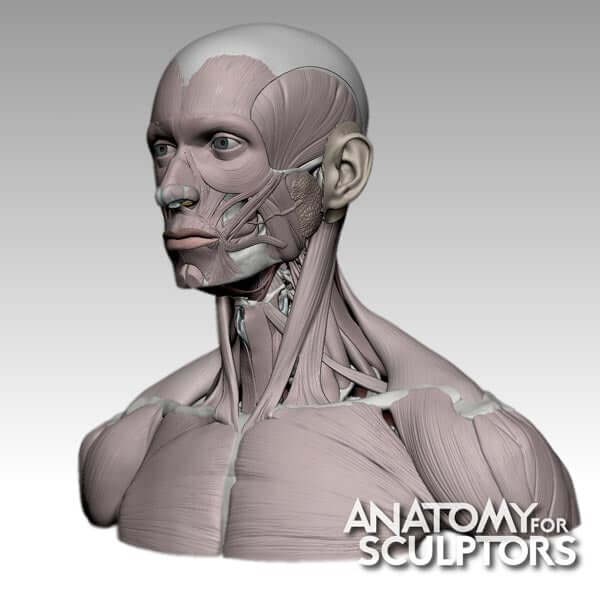
In the Form of the Head and Neck book, these critical features are analyzed, and we describe how they affect the form of one’s head. That’s where your understanding of the form of the head and neck will come from.
From simple to complex
A Grid for the Form! When looking at these ears below, some might see them as specific topologies. But Uldis Zarins, the author of the Form of the Head and Neck book, encourages us to see this approach as a Grid that visually describes the form.
To properly understand all the complex structures of human anatomy, we must simplify them first. Every element of the face, such as
the mouth, eye, or ear, is broken down in the Form of the Head and Neck book. They are first reduced into block-outs and then re-developed into detailed realistic shapes.

Visual and image information, including 3D models, photos, and color-coding, is an essential part of the Form of the Head and Neck book and our previous books – Understanding the Human Figure and Anatomy of Facial Expressions. We pay attention to this because artists need to have this structured approach.
Don’t get lost and stuck in the constant search for the perfect references – we offer you freedom! The Form of the Head and Neck book is a sculpting tool and a physical handbook with all the references you need, along with the information that lets you understand the form of the head and neck.
Books on Anatomy for All Visual Artists
Form of the Head and Neck is a handbook for all kinds of visual artists. Our community started specifically with the needs of sculptors in mind – hence, the “Sculptors” in Anatomy for Sculptors. But since then, we have shaped the knowledge of human anatomy with all kinds of visual artists in mind.
In all our books, we only use text where necessary, thus keeping the experience simple, intuitive, and widely accessible. We achieve this through the teamwork of fantastic 3D and 2D artists who work alongside medical and anatomy experts.
Uldis Zarins, the author of the Anatomy for Sculptors book series, teaches anatomy at the Art Academy of Latvia, and he’s an award-winning traditional sculptor with more than 25 years of experience.
Human Body Proportion Calculator
During the Kickstarter, we created a goal to bring back human proportions calculators. It is a tool for artists to calculate all the ideal body proportions. It’s available right now! And it is free to use.
Form of the Head and Neck Project on Kickstarter
If you want to see how the project for the Form of the Head and Neck book went, you can do so here in this article. In the project, you can see all the additional content – video, text, and images that we created during our Kickstarter campaign. And all the support we receive from our great community is also visible on the page! Follow us on Anatomy for Sculptors Kickstarter page if you want to be the first to receive the news about any upcoming books.
Join our newsletter
Be the first to receive news about upcoming books, projects, events and discounts!
